In line with its ambitions, Gulf Keystone, a leading independent operator and producer in the Kurdistan Region of Iraq, has managed to record a gross average production of around 41,400 bopd in 2025
The company's approach involved transitioning from trucking sales to pipeline exports via the Iraq-Türkiye Pipeline so that volumes can be quickly ramped up to attain full well capacity.
Well workover is currently underway to bring back two wells online, which in turn, will result in increased production rates by early 2026. A three-week shutdown is also in plans next year to ensure safety upgrades at PF-2, with equipment tie-ins to be conducted as well. Engineering design work is on track for the installation of PF-2 water handling in 2027.
Jon Harris, Gulf Keystone’s chief executive officer, said, "2025 has been a milestone year for the Company after pipeline exports from the Shaikan Field were successfully restarted in September following a hiatus of over two and a half years. Liftings allocated to Gulf Keystone and other IOCs commenced in November and we are pleased to have recently received our first payment. The process as outlined in the interim exports agreements is working and we look forward to a return to full PSC entitlement at international prices following the international independent consultant’s review.
"We are on track to meet our production, capital and cost guidance for 2025. Strong operational and financial performance in the year has enabled us to safely advance key projects while distributing US$50mn of dividends to shareholders. Cumulative production from the Shaikan Field recently surpassed 150 million barrels, underlining the scale and quality of the asset. Looking ahead to 2026, we are expecting a base work programme focused on the progression of current projects. We are also embedding optionality to restart drilling and review disciplined field development, contingent on consistent exports payments at international prices. We are excited about a potentially transformational year for the company and remain focused on executing for our shareholders."


QatarEnergy has signed a production sharing agreement (PSA) for shallow-water Block S4 offshore Guyana, formalising its participation in the block awarded during the country’s 2022 licensing round.
Saad Sherida Al-Kaabi, Qatar’s Minister of State for Energy Affairs and President and CEO of QatarEnergy, said the agreement aligns with the company’s strategy to expand its international upstream footprint.
“We are pleased to secure this exploration block in Guyana, further building on the strategy to expand our global upstream exploration activities,” he said.
“I would like to thank the government of the Cooperative Republic of Guyana and our partners in the block for their valued support and cooperation. We look forward to working together to deliver on our exploration objectives.”
Under the PSA, TotalEnergies will operate the block with a 40% stake. QatarEnergy will hold 35%, while Petronas will take the remaining 25%.
Block S4 spans 1,788 sq km and lies around 50–100 km offshore Guyana, in shallow waters ranging from 30–100 metres. The agreement further strengthens QatarEnergy’s growing presence in the Americas’ exploration landscape.
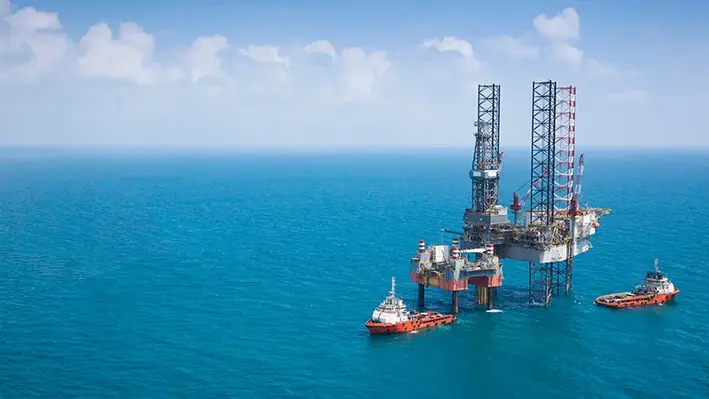
 Saudi Aramco has deepened its long-standing relationship with the United States by signing 17 new memoranda of understanding and agreements worth more than US$30bn, marking another significant step in its strategy to broaden global partnerships and support long-term growth.
Saudi Aramco has deepened its long-standing relationship with the United States by signing 17 new memoranda of understanding and agreements worth more than US$30bn, marking another significant step in its strategy to broaden global partnerships and support long-term growth.
These latest commitments span a wide range of sectors, from liquefied natural gas (LNG) and advanced materials to financial services and industrial supply chains, reinforcing Aramco’s position at the centre of global energy and technology collaboration.
The new deals build on the company’s earlier announcement in May 2025, when Aramco unveiled 34 MoUs and agreements with a combined potential value of around US$90bn. Together, the partnerships announced this year now approach an impressive US$120bn, reflecting a sharp expansion of its collaborative pipeline with American companies.
A major emphasis of the new agreements lies in LNG development. Aramco signed an MoU with MidOcean Energy linked to potential investment in the Lake Charles LNG project on the US Gulf Coast. The company is also assessing opportunities for cooperation with Commonwealth LNG on its liquefaction project in Louisiana, including discussions involving potential LNG and gas purchases through Aramco Trading. These moves highlight the Saudi energy giant’s increasing interest in global LNG markets as demand continues to evolve.
Aramco also strengthened ties with leading US suppliers such as SLB, Baker Hughes, McDermott, Halliburton, NESR, KBR, Flowserve, NOV, Worley and Fluor. These agreements reflect ongoing requirements across the company’s upstream and downstream operations, ensuring continued access to essential materials, engineering services and procurement support.
In the field of advanced materials, Aramco extended its existing MoU with Syensqo to examine opportunities for localising the production of carbon fibre and composite materials, a sector seen as increasingly important for industrial innovation and lightweight manufacturing.
Financial services were another key focus. Wisayah, Aramco’s investment arm, entered into asset management and investment agreements with Loomis Sayles, Blackstone and PGIM, while Aramco reached a strategic partnership with J.P. Morgan centred on cash account management.
Amin H. Nasser, Aramco President and CEO, said,“Since the 1930s, US firms have played a major role in supporting the company’s success… We expect the multi-billion dollar MoUs and agreements announced today to act as a springboard for further progress, strengthening Aramco’s longstanding legacy of collaboration with American counterparties and unlocking new value creation opportunities that promote innovation and growth."

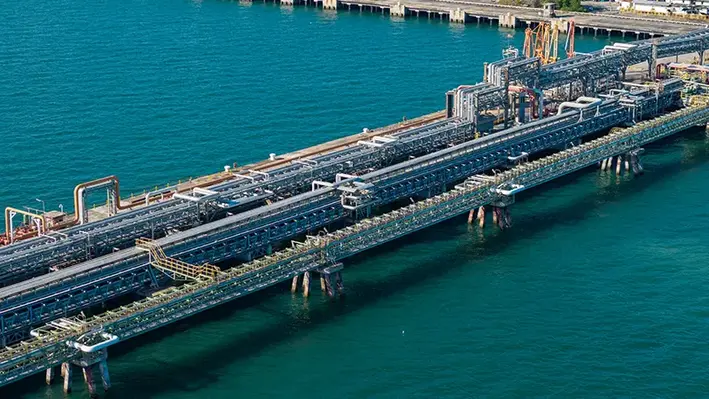 The Bouri Gas Utilisation Project development in Libya that aims valourising the associated gas from the Bouri field will involve work class ROVs performing offshore touch down monitoring.
The Bouri Gas Utilisation Project development in Libya that aims valourising the associated gas from the Bouri field will involve work class ROVs performing offshore touch down monitoring.
Specialised vessels by Next Geosolutions called NG Worker and NG Surveyor will be deployed for the operations in line with around €8.5mn-worth survey and support-to-installation contract awarded by Saipem.
A significant project including complex construction and pipelines delivery, Saipem will be handling the installation of a new Gas Recovery Module, along with a series of upgrades and enhancements to the existing infrastructure. Its contract with Next Geosolutions include optional extensions following operations in Q4 2025.
NextGeo, which mainly deals in renewables and subsea power cables, is excited to have stepped into the oil & gas segment with this significant project from North Africa. It is an addition to another major contract from the same project that was landed last July by the company's affiliate Rana Subsea. Valued at approximately €62.6mn, the contract mandates Rana Subsea to provide specialised subsea services and installation support operations, extending through Q2 2026.
Giovanni Ranieri, CEO of Next Geosolutions, said, “The award of these new contracts with Saipem marks a significant step forward in the growth path of our Group. The joint presence of NextGeo and Rana Subsea in the same project clearly demonstrates the full complementarity of our expertise and our ability to operate in synergy across different yet closely integrated activities, positioning ourselves as a single, trusted partner for the development of complex projects. This is a collective achievement that strengthens our Group identity and represents a natural evolution towards an increasingly integrated, competitive, and operationally excellent model.”
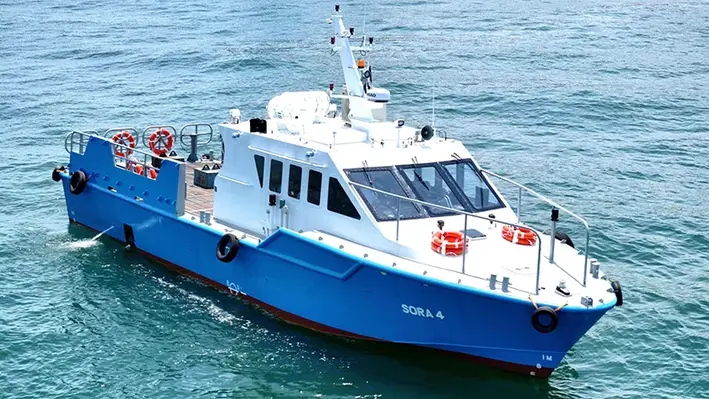
 Sora Marine Services has expanded its operations with the addition of a new 24-passenger aluminium crewboat, Sora 22.
Sora Marine Services has expanded its operations with the addition of a new 24-passenger aluminium crewboat, Sora 22.
The vessel, designed for efficiency and durability, will serve the country’s thriving offshore oil and gas industry, transporting personnel and cargo to platforms across Qatari waters.
Built by Lita Ocean in Singapore and designed by Jenjosh Marine Design, Sora 22 is engineered for performance and reliability. The vessel measures 24 m in length, with a beam of nearly 3 metres and a breadth of 6 metres, offering both agility and stability in challenging marine conditions. Constructed to Bureau Veritas standards, the lightweight aluminium hull ensures optimal speed and fuel efficiency vital for offshore logistics.
Powered by two Yanmar 6AYM-WET(M) four-stroke diesel engines, each delivering 610 kW at 1,900 rpm, Sora 22 achieves a maximum speed of 18 knots and cruises comfortably at 16 knots. The propulsion system, featuring twin screw propellers driven through marine gearing, ensures dependable performance for daily offshore operations.
Based in Doha, Sora Marine Services is a 100% Qatari-owned company providing a wide range of marine solutions from crew transfer and logistics to nearshore dive support.
With the introduction of Sora 22, the company reinforces its commitment to supporting Qatar’s energy ambitions, combining local expertise with world-class engineering to deliver safe, reliable, and efficient offshore transport.
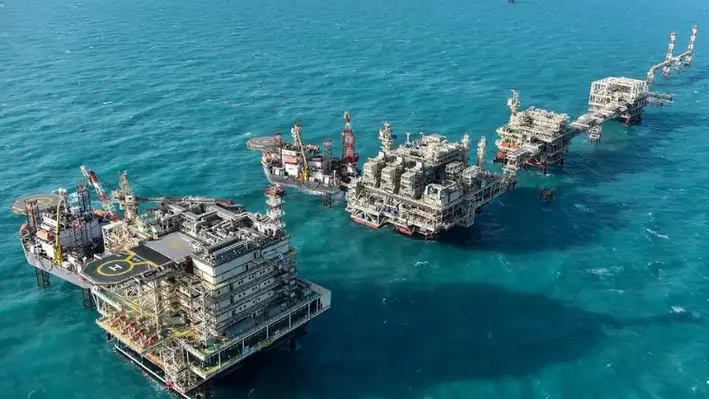

NMDC Energy, a leading provider of engineering, procurement, and construction (EPC) services for offshore and onshore energy clients, has signed a strategic Memorandum of Understanding (MoU) with Baker Hughes in Saudi Arabia.
The partnership aims to enhance localisation of Baker Hughes’ key products and solutions in the Kingdom's offshore energy sector, supporting markets across the Middle East, North Africa, Turkey, and India (MENATI).
Leveraging NMDC Energy’s advanced facilities, particularly its yards in Saudi Arabia, the collaboration will focus on offshore products and services to meet the growing needs of the offshore market. Planned initiatives include an Emergency Pipeline Repair System (EPRS) project and the establishment of a logistics base to support flexible pipeline systems across the Kingdom and the wider MENATI region.
This agreement follows a separate MoU between NMDC Energy and Baker Hughes covering gas technology products. The company has recently strengthened partnerships with several regional and international firms during ADIPEC in Abu Dhabi, reinforcing its position as a leading EPC service provider in the energy sector.
Earlier this year, NMDC Energy inaugurated its state-of-the-art fabrication yard in Ras Al Khair, Saudi Arabia. Located within the Ras Al-Khair Special Economic Zone, the 400,000 sq m facility has an annual production capacity of 40,000 tons and integrates automation and digital systems to deliver comprehensive fabrication, rigging, maintenance, and modularisation services for large-scale energy infrastructure projects.
Eng. Ahmed Al Dhaheri, chief executive officer of NMDC Energy, said, “NMDC Energy’s fabrication capabilities have drawn global players, particularly leading entities such as Baker Hughes, who share our vision of finding synergies that meet the evolving energy sector demands in the Kingdom and the wider MENATI region. As a strategic enabler of Saudi Arabia’s energy sector through global partnerships, NMDC Energy is committed to finding new pathways towards increased localisation in the Kingdom, supporting economic growth, job creation, and diversification.”

 ADNOC has unveiled its AI-powered Production System Optimisation (AiPSO) platform, marking a new era of data-driven efficiency in upstream operations.
ADNOC has unveiled its AI-powered Production System Optimisation (AiPSO) platform, marking a new era of data-driven efficiency in upstream operations.
The technology, initially rolled out across eight fields, cements ADNOC’s ambition to become the world’s most AI-enabled energy company, setting a new benchmark for innovation in oil and gas productivity.
Developed in collaboration with SLB, the AiPSO platform is powered by SLB’s Lumi data and AI platform and enhanced with Cognite Data Fusion. The system harnesses millions of real-time data points, artificial intelligence, and ADNOC’s proprietary machine learning models to proactively monitor, analyse, and optimise the performance of thousands of wells and hundreds of processing facilities.
Through this integration of advanced digital intelligence, AiPSO transforms how engineers interact with production systems—reducing diagnosis and optimisation time from days to mere minutes. By connecting field and office operations in real time, the platform enables smarter, faster, and more collaborative decision-making, ultimately boosting well productivity and workforce efficiency.
Musabbeh Al Kaabi, ADNOC Upstream CEO, said, “AiPSO will transform the productivity of our upstream operations as we work to become the most AI-enabled energy company. This industry-leading solution will support our strategy to increase production capacity while significantly enhancing the productivity of our people by freeing them to pursue value-adding opportunities and completing complex tasks up to ten times faster.”
Following its successful pilot, ADNOC plans to deploy AiPSO across all onshore and offshore fields by 2027, expanding its AI-driven transformation throughout the entire production chain.
Olivier Le Peuch, SLB CEO, added, “The AiPSO platform is an example of SLB’s ambition to combine artificial intelligence and domain expertise to drive improvements in production and recovery. We are proud to continue our collaboration with ADNOC to jointly deliver advanced digital and AI solutions that drive long-term value and operational resilience for ADNOC both today and tomorrow.”
AiPSO also complements ENERGYai, the first agentic AI solution co-developed by ADNOC and AIQ, showcasing the company’s cohesive AI strategy aimed at enhancing safety, efficiency, and sustainability across operations.
This announcement reinforces SLB’s growing AI ecosystem, following the recent launch of its Tela agentic-AI assistant, its collaboration with AIQ to advance ENERGYai, and last year’s introduction of the Lumi data and AI platform.
Together, ADNOC and SLB are not just optimising production - they are redefining the future of intelligent energy systems, where data and AI converge to power smarter, faster, and more sustainable operations.
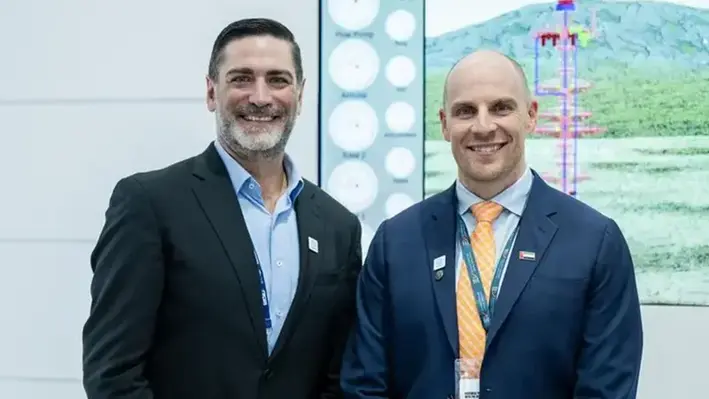
 Enersol has announced the launch of Video While Fishing (VWF), an innovative service developed through the first-ever collaboration between its portfolio companies, Deep Well Services (DWS) and EV.
Enersol has announced the launch of Video While Fishing (VWF), an innovative service developed through the first-ever collaboration between its portfolio companies, Deep Well Services (DWS) and EV.
The milestone was unveiled at ADIPEC, one of the world’s leading energy events, held in Abu Dhabi.
The partnership signifies the start of Enersol’s mission to introduce cutting-edge technology and AI-powered innovations to the Middle East’s energy industry.
VWF integrates EV’s downhole video technology with DWS’s patented Hydraulic Completion and Intervention Units (HCUs), allowing operators to visually guide fishing operations with exceptional accuracy. The result is faster, smarter, and more efficient well interventions.
Dean Watson, CEO of Enersol, said, “This is more than a product launch, it’s a proof point of what Enersol was built to do. By bringing together the strengths of DWS and EV, we’re solving real-world challenges with real-time intelligence. This is the first of many collaborations that will unlock the full potential of our portfolio, delivering measurable impact, faster recovery, and smarter operations across the region.”
Instead of relying on guesswork, operators can now see exactly what’s happening downhole, identifying stuck objects, assessing conditions and orientation, and carrying out retrievals with confidence. This visual capability transforms fishing from a reactive process into a proactive, data-driven operation.
The launch of VWF highlights Enersol’s commitment to integrating AI, machine learning, and advanced diagnostics into traditional oilfield operations. This approach enhances performance, reduces non-productive time, and accelerates well returns.
As the UAE continues to lead the global energy transformation, Enersol is proud to support this vision by providing next-generation solutions that blend American innovation with Emirati ambition.
As the world’s largest energy event, ADIPEC is the ideal platform to experience the innovation Enersol is bringing to the Middle East and beyond.
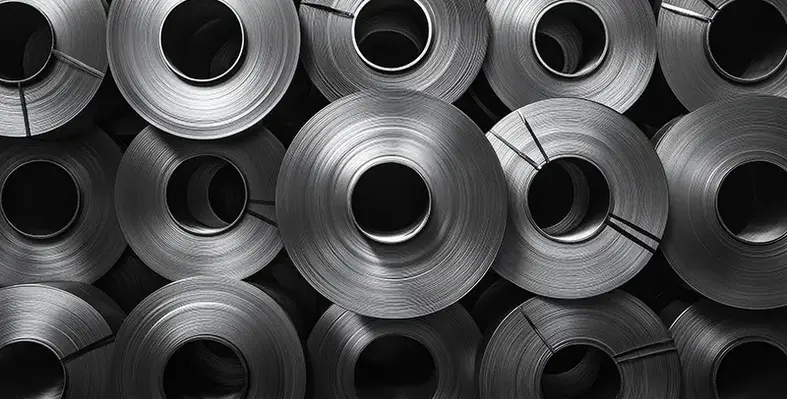
 Energy technology company, Baker Hughes, has entered a deal with Aramco to expand its integrated underbalanced coiled tubing drilling (UBCTD) operations across Saudi Arabia’s natural gas fields.
Energy technology company, Baker Hughes, has entered a deal with Aramco to expand its integrated underbalanced coiled tubing drilling (UBCTD) operations across Saudi Arabia’s natural gas fields.
The multi-year agreement secures scope for current UBCTD fleet expansion from four to 10 units for re-entry and greenfield drilling projects across fields in the Kingdom. The integrated solutions will cover every aspect of the UBCTD operations, including coiled tubing drilling units, underbalanced drilling services, operational management, well construction, and geosciences to scale and accelerate their access to gas from new and established fields.
“This project is the result of nearly two decades of successful collaboration between Baker Hughes and Aramco, which have set the standard for UBCTD,” said Amerino Gatti, executive vice president of Oilfield Services & Equipment at Baker Hughes. “By combining advanced technologies with a holistic, integrated approach, we can support Aramco to more efficiently access bypassed and hard-to-reach hydrocarbons and produce the resources that help the Kingdom thrive. This expansion sets the stage for further innovation in UBCTD, which has the potential to shape how oil and gas are produced around the world.”
The integrated approach to UBCTD includes CoilTrak bottomhole assembly (BHA) system and enhanced reservoir analysis driven by GaffneyCline energy advisory. The combined effect of these technologies and insights result in smooth navigation of the subsurface environment during horizontal drilling and re-entry operations. These, backed by holistic project management services, will lead to enhanced production efficiency, speed and safety while mitigating reservoir damage when compared to traditional development methods.
Work under the expanded agreement is scheduled to commence in 2026.
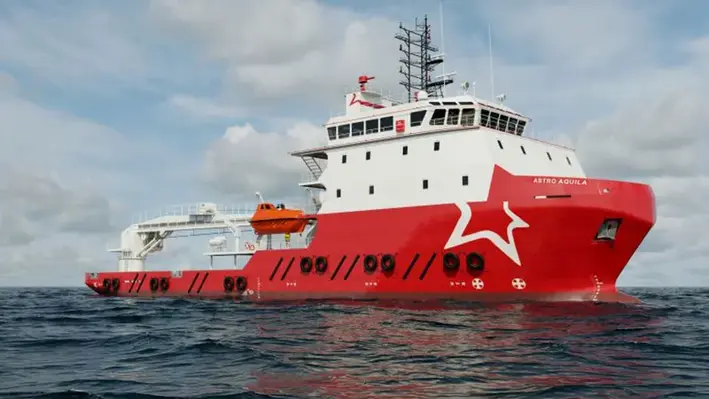
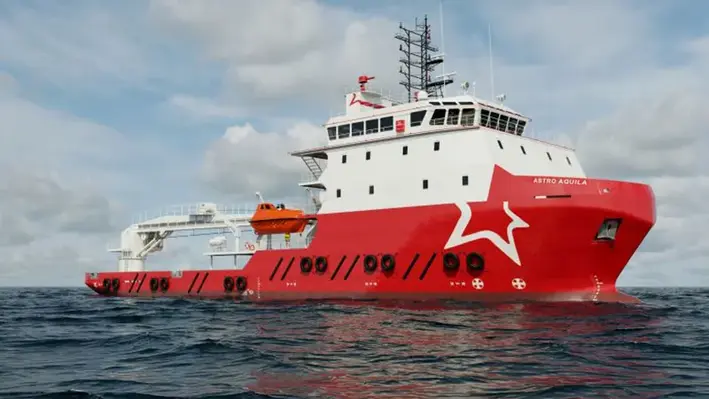 Dubai-based offshore vessel operator Astro Offshore, part of the Adani Group, has reached a major milestone by adding its 50th vessel to the fleet.
Dubai-based offshore vessel operator Astro Offshore, part of the Adani Group, has reached a major milestone by adding its 50th vessel to the fleet.
The company has welcomed the Astro Achernar, an advanced 88-metre DP2 diesel-electric multipurpose support vessel (MPSV), designed to enhance its offshore support and subsea operations.
The newly acquired Astro Achernar comes equipped with accommodation for 222 personnel and a 100-tonne active heave-compensated (AHC) crane, boosting the firm’s capabilities across complex offshore projects.
“This milestone represents more than just a number, it’s a reflection of the trust our clients place in us and the dedication of our team across every level of the organisation,” said Mark Humphreys, CEO of Astro Offshore. “With the addition of Astro Achernar, we continue to strengthen our fleet, expand our capabilities, and position Astro as a trusted partner in delivering safe, efficient, and versatile offshore support.”
The expansion reflects a period of exceptional growth for Astro Offshore, which has doubled its fleet from 25 to 50 vessels in just 12 months. Over the past six weeks alone, the company has added seven new vessels, with the Astro Achernar marking the eighth in this rapid phase of development.
This strategic growth highlights Astro Offshore’s commitment to delivering high-performance solutions and maintaining its reputation as one of the region’s most reliable offshore support providers. With a focus on safety, innovation, and operational excellence, the company continues to strengthen its position in the global offshore market.

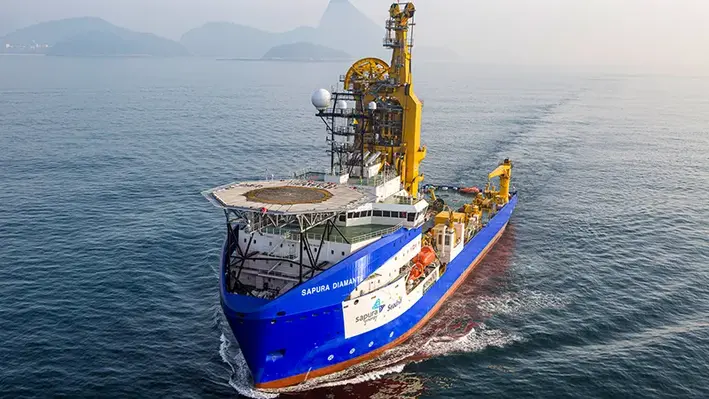 Malaysian offshore services provider Vantris Energy, formerly known as Sapura Energy, has signed a significant long-term agreement with Saudi Aramco to support its offshore operations.
Malaysian offshore services provider Vantris Energy, formerly known as Sapura Energy, has signed a significant long-term agreement with Saudi Aramco to support its offshore operations.
According to a recent Bursa Malaysia filing, the agreement covers the provision of diving support vessels, remotely operated vehicles (ROVs), and the deployment of highly skilled diving and technical personnel. These resources will assist Aramco in a range of offshore activities, ensuring safe and efficient operations.
The contract is set to commence on 1 May 2027 and will continue until 30 April 2034. It includes services such as inspection, survey, photography, non-destructive testing, structural maintenance, and repair work. While financial terms were not disclosed, the deal is expected to make a positive contribution to Vantris Energy’s earnings and further strengthen its order book.
“This achievement validates our strategic direction to strengthen our operations and maintenance portfolio while expanding beyond Malaysian waters,” said Muhammad Zamri Jusoh CEO of Vantris Energy.
This agreement marks another step in Vantris Energy’s strategy to grow its presence in the global offshore services market.


Fugro announced that it would showcase its latest digital innovations in offshore asset management at ADIPEC 2025, taking place in Abu Dhabi from 3–6 November.
Visitors to Fugro’s booth would see how the company was transforming conventional inspection workflows through advanced digital solutions, uncrewed surface vessels (USVs) and AI-powered analytics — all aimed at helping clients make faster decisions, lower costs and enhance sustainability.
Presented under the theme “Digital Geo-data”, Fugro’s exhibit would demonstrate how cutting-edge technology was redefining the monitoring and maintenance of offshore infrastructure. Among the key technologies were high-resolution 3D point clouds that replaced static drawings with interactive, navigable visuals; digital twins offering continuously updated virtual replicas of offshore assets for improved planning and maintenance; and AI-driven systems that automatically detected corrosion, flooded members and structural anomalies to enable predictive maintenance.
Fugro’s integrated approach focused on continuous, intelligent inspection using USVs to perform regular remote surveys. The data collected from these missions fed into AI platforms that identified potential issues before they developed into critical problems. This proactive system helped clients avoid costly downtime, strengthen asset reliability and make informed operational decisions.
The benefits of this digital transformation were clear: improved efficiency, reduced operational expenses and comprehensive datasets to support long-term asset management strategies. Fugro’s remote and autonomous technologies also contributed to sustainability objectives by reducing offshore vessel time and lowering CO₂ emissions, reinforcing the company’s commitment to a safer, more efficient and environmentally responsible offshore industry.
Page 1 of 11
Copyright © 2025 Offshore Network